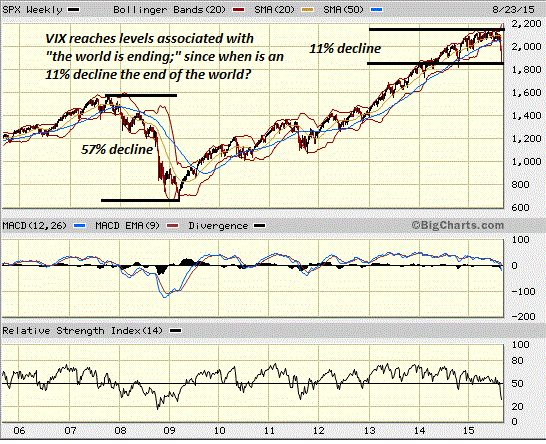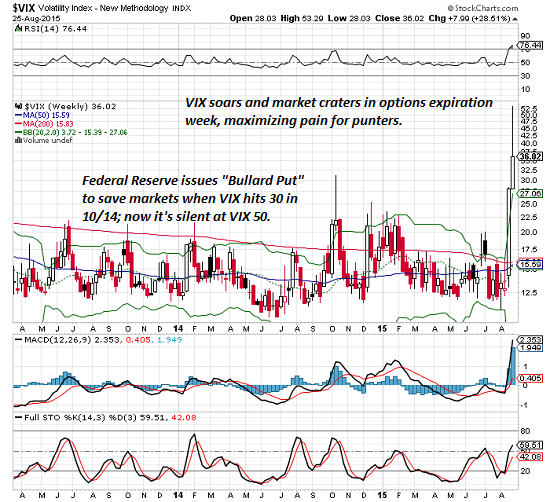All of this runs counter to the propaganda with which we are regaled on a daily basis. For example, investors are told that the lower the volatility of their portfolios, the lower the risk. But, in 2008 that turned out not to be true. More recently, as volatility in the widely watched S&P 500 settled down to historic lows this year, investors believed that the magic of low volatility was here to stay. Central banks–through their periodic interventions when markets began to fall–had somehow engineered a no-lose situation for investors. It was going to be clear sailing ahead for…well, forever if you listen to Wall Street.
The history of volatility in markets and in life suggests that high volatility lies just around the bend after a prolonged period of low volatility. It is impossible to say what would trigger the kind of crash we saw in 2008. For now, the Chinese stock market crash and recent negative economic news in China and the United States have unnerved many investors. The Chinese stock market is now more than halfway to a 2008-style meltdown. Stocks in Europe and the United States have finally started to fall in earnest after holding up and even advancing in the face ofmajor declines in emerging markets such as Brazil, Indonesia, Malaysia, and Turkey. Money rushed from the emerging markets to major developed economies looking for–you guessed it–stability.







 Byzantine Empire. Constantine VII Porphyrogenitus, with Romanus I and Christopher. 913-959 AD. Gold Solidus, Constantinople mint. Struck 924-931 AD.
Byzantine Empire. Constantine VII Porphyrogenitus, with Romanus I and Christopher. 913-959 AD. Gold Solidus, Constantinople mint. Struck 924-931 AD.



